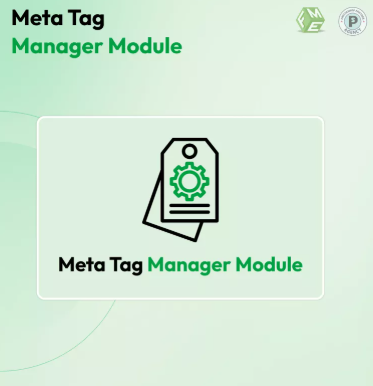Step-by-Step Guide to Generating Effective Meta Tags in PrestaShop

Meta tags are a foundational part of search engine optimization (SEO) that can significantly influence how your PrestaShop store appears in search engine results pages (SERPs). With Google prioritizing mobile-first indexing, creating effective meta tags that perform well across devices is more important than ever.
Using a Prestashop Meta Tags Generator can simplify and speed up the process, helping you maintain consistent, optimized meta titles and descriptions for your products, categories, and pages. This step-by-step guide will walk you through generating meta tags that improve visibility and attract more mobile users to your store.
Why Meta Tags Matter for Your PrestaShop Store
Meta tags provide concise information about your webpage to search engines and potential customers. Well-crafted meta titles and descriptions:
-
Improve click-through rates (CTR)
-
Help search engines understand page content
-
Influence rankings in mobile and desktop searches
-
Enhance user experience with clear, relevant snippets
Given that more than half of web traffic comes from mobile devices, ensuring your meta tags are mobile-friendly is crucial for success.
Step 1: Install a PrestaShop Meta Tags Generator Module
To efficiently generate meta tags, begin by installing a reliable Prestashop Meta Tags Generator module. Look for features such as:
-
Bulk meta tag creation and editing
-
Dynamic placeholders (e.g., product name, category)
-
Responsive and lightweight design
-
Compatibility with your PrestaShop version and theme
Installing the right module will lay the groundwork for a scalable SEO strategy.
Step 2: Define Your SEO Keyword Strategy
Before creating meta tags, identify your target keywords based on customer search intent. Use SEO research tools to find keywords relevant to your products and categories, with an emphasis on mobile search terms.
Organize primary and secondary keywords and consider how they can naturally fit into meta titles and descriptions.
Step 3: Configure Meta Tag Templates Using the Generator
Access the module’s configuration panel to set templates for titles and descriptions. Use placeholders to dynamically insert product names, categories, or other relevant data, for example:
-
Title template:
{product_name} - Buy Online | {category} -
Description template:
Get the best deals on {product_name}. Shop now for quality {category} at great prices.
Set character limits to avoid truncation on mobile devices (50-60 characters for titles, 120-160 for descriptions) and ensure tags remain concise and readable.
Step 4: Generate Meta Tags in Bulk
With your templates configured, generate meta tags across your product catalog, categories, and CMS pages. Bulk generation saves time and maintains uniformity.
After generation, sample various pages on different devices to check that titles and descriptions display properly and effectively communicate the page content.
Step 5: Manually Customize High-Impact Pages
Some pages, such as your homepage, best-selling products, or promotional categories, benefit from manual meta tag refinement. Use the module’s override feature to tailor meta tags that better engage users and improve click-through rates on mobile search results.
Step 6: Optimize URLs and Page Speed
Meta tags work best in conjunction with clean URLs and fast-loading pages. Ensure your PrestaShop store uses friendly URLs and that images and scripts are optimized for mobile speed. Together, these factors improve SEO and user experience.
Step 7: Monitor SEO Performance and Adjust Tags
Regularly use tools like Google Search Console to track how your meta tags impact traffic, rankings, and CTR. Identify pages with low performance and update meta tags or templates as needed to align with changing search trends and user behavior.
Step 8: Keep Your Meta Tags Updated
SEO is ongoing. Update your meta tags seasonally, when launching new products, or when revising marketing strategies. A Prestashop Meta Tags Generator makes bulk updates easy, keeping your store competitive and relevant.
Conclusion
Generating effective meta tags in PrestaShop is essential for improving your store’s visibility and attracting mobile users. By using a Prestashop Meta Tags Generator and following a structured approach—from keyword research to bulk generation and monitoring—you can ensure your meta titles and descriptions consistently boost your SEO.
Pair this with responsive design and fast-loading pages to provide an exceptional experience for all users, regardless of their device.
- Art
- Causes
- Crafts
- Dance
- Drinks
- Film
- Fitness
- Food
- Games
- Gardening
- Health
- Home
- Literature
- Music
- Networking
- Other
- Party
- Religion
- Shopping
- Sports
- Theater
- Wellness


